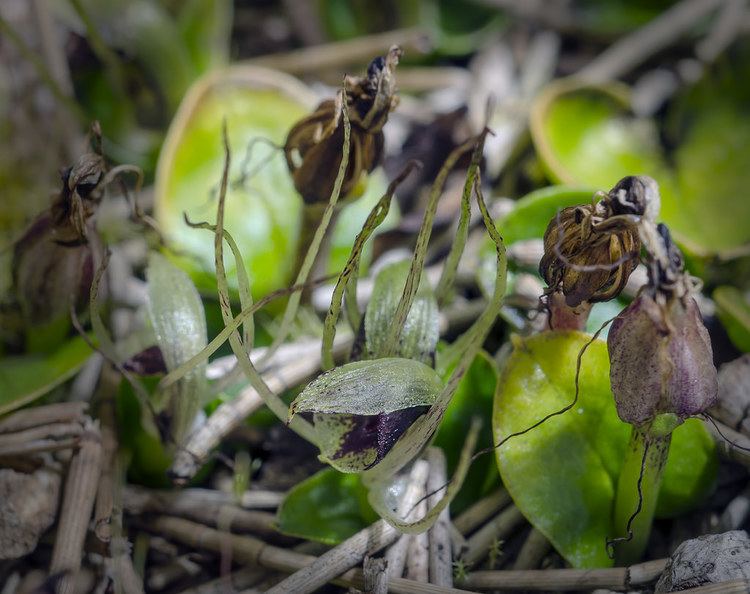Kingdom Plantae Subfamily Orchidoideae Subtribe Acianthinae Scientific name Nematoceras dienemum Order Asparagales | Family Orchidaceae Tribe Diurideae Genus Nematoceras Rank Species | |
 | ||
People also search for Nematoceras sulcatum, Nematoceras | ||
Nematoceras dienemum , also known as the windswept helmet-orchid, is one of two helmet orchids endemic to Australia’s subantarctic Macquarie Island, and the first orchid to be found there. It was discovered in 1978 and identified as Corybas macranthus, then split off and described by David Jones in 1993 as a new species, Corybas dienemus (from Greek dienemos - “windswept”). In 2002 it was placed in the reinstated genus Nematoceras.
Contents
Distribution and habitat
The orchid is known from ten sites on the northern half of Macquarie Island, where it inhabits the lower coastal terraces, not more than 30 m above sea level, where the vegetation is dominated by mosses which float on a substrate of waterlogged peat with a water table very close to the soil surface. The total known population comprises about 7500 plants.
Description
The orchid is a small (30–50 mm tall), terrestrial, tuberous, herbaceous plant that forms clonal colonies. The leaves are flattish, fleshy and solitary, dark green above and silvery-green underneath. The flower is erect, nestling in the leaf base, green with purplish-red markings, 25–30 mm long and 20–25 mm wide. It can be distinguished from its congener and the only other orchid on the island, the Grooved Helmet-orchid Nematoceras sulcatum, by its predominantly green flowers, compared with the predominantly dark red ones of N. sulcatum.
Reproduction
The flowering period of the orchid is from November to January. It produces seeds annually but also reproduces vegetatively through the production of daughter root-tubers on lateral underground stolons. Its leaves die off in autumn, with new leaves emerging in spring. Although the life expectancy and age of sexual maturity of the orchid are unknown, it is likely that some clonal colonies have existed for several decades. The pollination method is unknown, though one possible pollinator is the Black Fungus Gnat (Bradysia watsoni), which is common on the coastal terraces where the orchid is found.
Conservation status
Macquarie Island is a nature reserve, a World Heritage Site and a UNESCO Biosphere Reserve. However, the Windswept Helmet-orchid is listed as endangered on the Tasmanian Threatened Species Protection Act 1995 because of its restricted distribution, small population and projected decline through ongoing habitat degradation caused by the grazing, digging and burrowing activities of rabbits. Additional threats are the formation of seal wallows and, potentially, climate change. It is also listed as Critically Endangered under Australia's Environment Protection and Biodiversity Conservation Act 1999.
